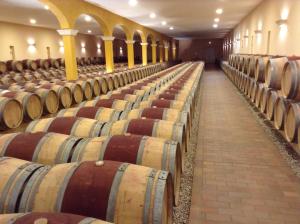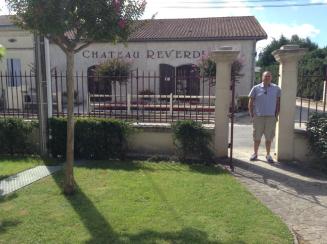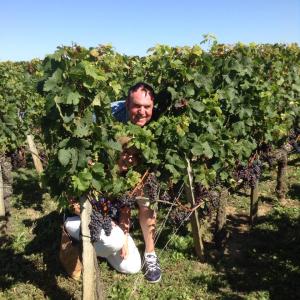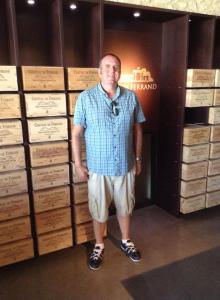I know France pretty well and lived in the capital for three years but one place I’d never visited and have long wanted to was the centre of the world’s most prestigious wine district, Bordeaux. The city on the banks of the Garonne River has some fantastic buildings and many fine eateries to suit all budgets but celebrating my fiftieth birthday and learning about wine were the main reasons for the visit. Bev and I decided to leave the car at home and fly down via Southampton.
The Aquitaine region was ruled for centuries in the Middle Ages by the English after Eleanor of Aquitaine married Henry Plantagenet, the future King Henry II. The city later supplied Guernsey’s thriving entrepôts which supplied the smugglers along the south coast of England….
First stop the left bank of the Garonne and the Médoc.


The area was once one of marshland and swamp which was drained by Dutch engineers. When we were there earlier this month the grapes were clustered on the vines. I wondered why rose bushes were planted at the end of rows and was told that they catch diseases before the vines so serve as nature’s early warning device. The first grapes were about to be harvested for the local equivalent of champagne, Crémant de Bordeaux available in white and rosé, the next grapes due to be harvested were for the white wines (around 12% of the region’s production) and finally reds, mostly Merlot, Cabernet Sauvignon and Cabernet Franc with some Petit Verdot, Malbec and Carménère. Visiting the AOC Listrac Médoc Château de Reverdi we were guided by co-owner Audrey Thomas through the whole wine making process from harvest through fermentation to bottling and storing including, not just alcoholic, but malolactic fermentation which involves converting harsh malic to lactic acid found in dairy products. Last year was disastrous for the region but this year, despite months of cool, rainy weather an Indian summer has saved the harvest and may produce some exceptional vintages.


Another day, another visit and the lovely village of Saint Émilion, a NATO World Heritage Site followed by a short drive to the Grand Cru Classé Château de Ferrand estate owned by the descendants of Baron Bic of biro pen fame! This was wine production on a far larger scale than the Médoc château we had visited and a wine estate in the Catalan area of Spain we went to a couple of years ago. One of the most interesting aspects we learnt about was the barrels. The best barrels are made of French oak and cost 800 Euros each, twice the price of the cheaper American oak equivalents. The wines aren’t bottled for at least a year after the harvest. Unlike Beaujolais in Burgundy, the wines here are never sold very young. When the barrels are replaced the old ones are often sold to Spanish sherry producers. It is illegal to water the vines in the Bordeaux region. Of course each visit ends with a tasting during which you learn to tip the wine in the glass against a white background, the redder the wine the newer it is and the browner the older. You also see how much of the wine clings to the side of the glass. Wines with the most legs are the youngest and most alcoholic… You then smell the wine to get an initial impression, swirl it in the glass and that frees the aromas. Finally, taste the wine and try to slurp it in your mouth , mixing it with air to taste the full flavour. Then either spit out or swallow! Of course certain wines are recommended to accompany certain dishes, and while anyone is free to drink red wine with fish or white with steak if they really want too, the rationale is is that the wine should never overpower the dish and the dish should never overpower the wine.
My trip to the Bordeaux area has not only reaffirmed my love of (especially red) wine but also enthused me to find out as much as I can about this wonderful drink which goes back thousands of years. It seems the early wines were drunk for their alcoholic content and effects or for ceremonial purposes rather than their quality which was usually highly questionable. The oldest production so far discovered goes back to Georgia around 6000BC!